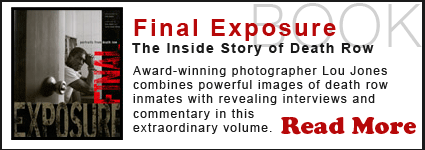The Chimp Sheet : Pixel Peeping
Friday, March 28, 2014
CHIMPING, verb 1) In digital photography, the group or individual
activity after taking a picture
of reviewing the results on the LCD & admiring the results with
"ooh ooh ahh ahh" similar to
monkey or ape's vocalizations. 2) The act of gaining sexual pleasure by
throwing ones
excrement...
In 2013AD (After Digital) much about photography has changed dramatically.
For over 150 years the time between taking a photograph & seeing the
pictures has varied widely but always seemed interminable. If we
processed glass plates or celluloid negatives ourselves, it might be hours but
if we had to send it off to some anonymous lab it could be days, weeks, months,
years before we laid eyes on the final product.
With digital we gained the advantage of faster results. Quicker than a
"Polaroid Minute". INSTANT GRATIFICATION. Not only has it given experts much
greater control over the final result but it makes taking pictures more
accessible to the average person.
Today everybody's a photographer. BILLIONS of images are being taken &
viewed & uploaded to computer networks. Not all of them GOOD pictures--but
more. Although my colleagues complain that this diminishes the artform, it is an
amazing, global phenomenon. By default, because of its power, photography is the
most important visual medium in the world. It overrides language, cost,
distribution & ease of everything else: books, newspapers, television, etc.
However our new found dependency on our LCDs has become almost as obsessive
as our cell phone screens. Watching the social dynamics of professionals &
amateurs bent over their camerabacks chimping is amusement in itself. Pointing
fingers at two or more shutterbugs rapt in an ersatz "mutual admiration society"
is a comedy skit.
Old timers wax nostalgic. Some resent the LCD. It is seen as a crutch & interrupts the rhythm of photography. It also destroys the mystique of photocreation. I think that romantic image is wonderful but I have adapted to being able to see if my ideas are not only viable but worthy of pursuing. I no longer have to spend 3-4 rolls of film hoping that my timing is on the button. I can "smash & grab" with increased efficiency.
The increase in feedback, quality & convenience that the LCD &
histogram have afforded us can never be ignored. We can see composition,
lighting, focus & exposure at a glance. But another byproduct that that is
of great importance to professionals is aspect ratio.
ASPECT RATIO in an image describes the proportional relationship
between its height & width.
Purists may insist they never crop their photographs. Therefore they are displayed exactly the way they are taken, imperfections & all. But sometimes more commercial usages need to fit into a predescribed space which requires resizing the original out of necessity. Graphic designers love to manipulate our photographs to accommodate well crafted layouts. Assignments often come with very tight specifications. And the professional photographer "shoots to" those layouts to get the most out of his/her efforts. Photography has to compete for space with words, charts, typography, illustration & advertising & must present maximum impact. Great design can come from unusual aspect ratios. Square, extreme horizontal or verticals. Covers, double trucks are the most common but graphic designers can be very capricious.
In these kinds of assignments it is the photographer's responsibility to
position all people, models, products, props into the right places. We do not
want important type to be illegible any more than headlines to interfere with
peak action, page gutters to cut through faces or products lopped off. Clients
have no sense of humor.
For many jobs I love working from layouts. It is like learning to "color
between the lines". It takes a lot of the guesswork out of the creative process
& concentrates your vision. In fact, over the years, I have found that the
more I am restricted, the more imaginative I can become. It is counterintuitive
but it really works.
Therefore we must figure out makeshift ways to oversee aspect ratios. If we are working tethered to a laptop, it is a simple matter of cropping a large image right on the screen & seeing if it all fits. But in more fluid environments, a USB cord tying us to our computers may not be practical. We often have to work from the back of our cameras. (In the old days we would fold up a Polaroid very carefully to be assured we were correct.) But digital allows us to do all that faster & better. We can see the image right away. Chimping allows us to see the cropped picture immediately too.
For decades designers have cut little pieces of paper & cardboard into
rectangles so they can size artwork. And we are not the first to adopt that
technique to photography. But my assistant has named the stencil-like apparatus
a chimp sheet. Before we go out on a job we request the dimensions of
the layout from the designers & using simple mathematics we construct the
different chimp sheets we will need.
unknown height of chimp sheet/width of LCD=height of layout image/width
of layout image ie
x/LCD=H/W



















0 comments:
Post a Comment